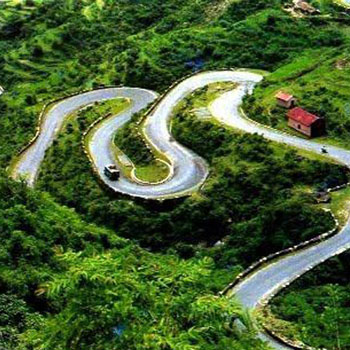Discover Araku Valley: Natural Wonders, Borra Caves, Waterfalls, and More

Araku Valley is a small paradise on Earth. Its enchanting, lush greenery captivates everyone who visits. This hill station, located 115 km from Visakhapatnam in Andhra Pradesh, draws tourists from around the globe with its breathtaking landscapes, silvery waterfalls and verdant forests.
A particularly captivating part of the journey to the Araku Hills is the narrow hairpin bends, which are enshrouded by thick forests. Along the way, over 40 tunnels and numerous bridges warmly welcome travellers. The dark shade and the glow of sodium lamps within the tunnels create an enchanting effect. Besides these, Araku Valley boasts waterfalls, well-maintained gardens, rich orchards, and lush forests, showcasing the valley's immense and incomparable beauty.
Must-Visit Places in Araku Valley
Borra Caves:
Borra Caves, among the most visited sites in Araku Valley, is also known as Borra Guhalu in Telugu, which means a bored cave. Located on the East Coast of India within the valley, this spectacular site is one of India's largest caves, with an elevation of about 705m (2,313 ft). It features a variety of speleothems and consists of karstic limestone extending to a depth of 80 m, making it the deepest cave in India.
Tribal Museum:
The Tribal Museum in Araku Valley is a renowned tourist attraction that has recently been renovated, offering facilities such as boating, coffee shops, and exquisite sculptures. Although still under construction, with completion expected in the next few months, the museum displays models of village panchayats and agricultural activities like plowing, millet farming, husk removal, and more. Additionally, it highlights an exclusive area for antique jewels, masks, and a photo gallery.
Katiki Waterfalls:
Originating from the Gosthani River, Katiki Waterfalls cascade from a height of 50 ft about 4 km away from Borra Caves. The clarity of the water allows one to see the rocks beneath with the naked eye. Surrounded by a tranquil ambiance and lush forests, some areas near the falls are slippery, yet the waters remain shallow, making it safe for visitors.
Dumbriguda Waterfalls:
Located a 15 km drive from Araku Valley, Dumbriguda Waterfalls, known for their milky appearance, are highly popular and always crowded. The site has become an ideal picnic spot as the pristine stream runs through the valley, creating a fairy-tale-like illusion. Cascading from a height of 3,215 ft, these waterfalls, surrounded by silver wood trees, have become a favourite spot for shooting South Indian films.
Travel Mode:
Train:
Trains from Visakhapatnam to Araku Valley offer a mesmerizing journey through the emerald Eastern Ghats and past numerous sparkling waterfalls.
Bus:
Buses to Araku Valley are available from Visakhapatnam and other major cities, covering a distance of 129 km.
FAQs:
What are the main attractions of Araku Valley?
Araku Valley is renowned for its lush greenery, scenic landscapes, Borra Caves, Katiki Waterfalls, Dumbriguda Waterfalls, and the Tribal Museum showcasing local culture and artifacts.
What makes Borra Caves famous?
Borra Caves, also known as Borra Guhalu, are among India's largest caves located at an elevation of 705m. They feature stunning speleothems and karstic limestone formations, extending deep into the earth.
How do you reach Araku Valley from Visakhapatnam?
You can reach Araku Valley from Visakhapatnam by train, enjoying a scenic journey through the Eastern Ghats with views of waterfalls, or by bus, covering a distance of 129 km through picturesque landscapes.
What are the notable waterfalls in Araku Valley?
Katiki Waterfalls, originating from the Gosthani River, cascade from a height of 50 ft and offer a tranquil setting amidst lush forests. Dumbriguda Waterfalls, known for their milky appearance, are another popular attraction located 15 km from Araku Valley.
What can visitors expect at the Tribal Museum in Araku Valley?
The Tribal Museum, currently under renovation, showcases models of village life, agricultural practices, antique jewels, masks, and a photo gallery highlighting local tribal culture. It offers facilities like boating and coffee shops for visitors.